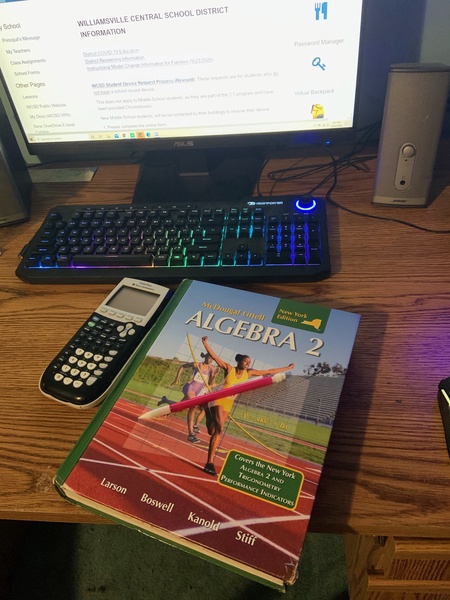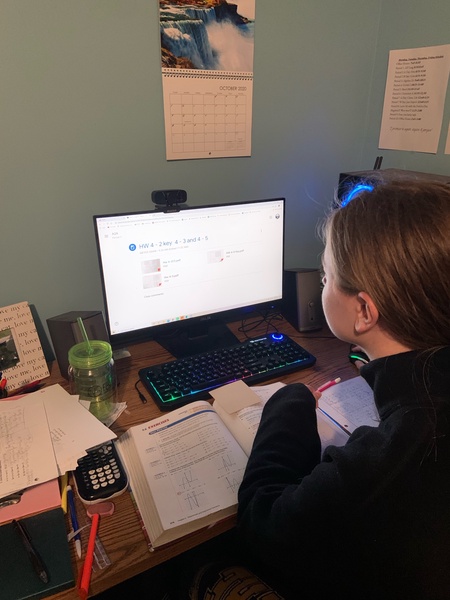By Colleen Meosky
As everyone knows, this 2020-21 school year is much different than any other year we’ve had before. In talking to Williamsville East students, it became clear that remote learning is no easy task. Seven students said they have four hours of homework a night, and six students said they have 3 hours. While these numbers are not unusually high for high school standards, some students believe it’s a much more taxing than previous years. East students have been learning in an entirely remote setting since September 14, for many, this is a tough learning environment.
Many students feel drained from the Zoom classes, and it leads to poor time management and an utter lack of motivation to stay on top of assignments. East student Ryan Chou believes that remote learning causes him to need more homework breaks due to the lack of energy throughout the school day and the many hours of screen time. While procrastination is not unheard of in the high school environment, it seems to be more common this year. After a long day of staring at a screen, it can be strenuous to finish assignments at night. It seems as though remote learning has created a rut many students have not been able to escape from.

The increased amount of homework breaks has also caused some students to go to sleep later when they have to wake up for first period starting at 8:10. According to the Sleep Foundation, “If allowed to sleep on their own schedule, many teens would get eight hours or more per night, sleeping from 11 p.m. or midnight until 8 or 9 a.m., but school start times in most school districts force teens to wake up much earlier in the morning. Because of the biological delay in their sleep-wake cycle, many teens simply aren’t able to fall asleep early enough to get eight or more hours of sleep and still arrive at school on time.”
The asynchronous Wednesdays have become a controversial subject. Some students believe it’s a well-deserved rest break half-way through the week, and others believe that overall, it is less productive while still being stressful with some 3:00 deadlines to meet. Many students have created the habit of waking up just enough to login to their homeroom Zoom and immediately returning to sleep. Considering the district’s current plan is to keep Wednesdays asynchronous when hybrid students return on October 26, this could be a long-term issue.
Although teachers have not been assigning abnormal amounts of homework, completing assignments has become more burdensome for many students this year. Of course, this issue will most likely lessen when hybrid students return to East. However, the remote kids (many of whom cannot safely return in person) will still have to deal with the tremendous amount of screen time. As the year proceeds, the Williamsville Central School District, along with East’s administration, will likely continue to adapt to providing education in a pandemic.
Citations: https://www.sleepfoundation.org/articles/teens-and-sleep










